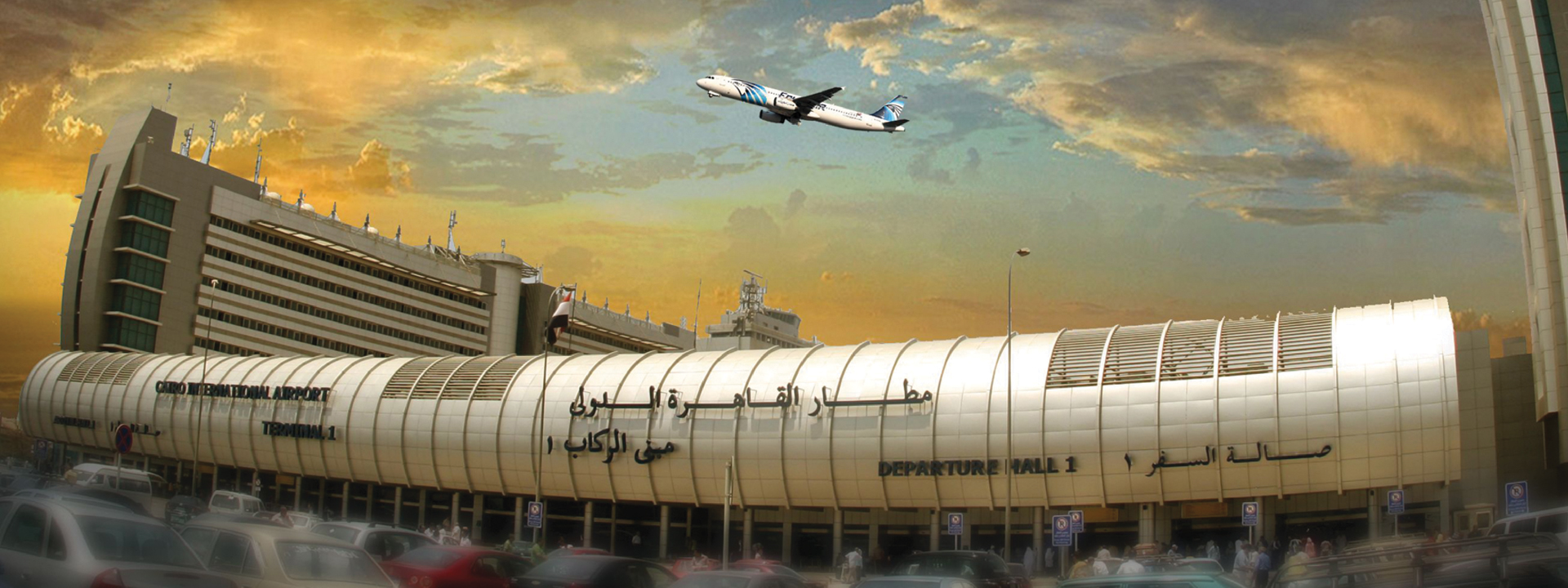Cairo International Airport
Located at the crossroads of Africa, the Middle East, Europe and the Persian Gulf, Cairo International Airport is a true gateway for global travelers and a regional hub for millions of visitors to Egypt. The Ministry of Civil Aviation along with the Egyptian Holding Company for Airports & Air Navigation and the Cairo Airport Company have embarked on a long-term development plan to upgrade and modernize its facilities, increase its capacity and set a new standard of service in the region.
Cairo Airport's mission is to become a passenger and cargo hub for the Middle East North Africa region. It is the busiest airport in Egypt and the primary hub for Egypt Air. The airport is located in the northeast of the city and has an area of approximately 37 square kilometers. The airport is administered by the Egyptian Holding Company for Airports and Air Navigation, which controls the Cairo Airport Company, the Egyptian Airports Company, National Air Navigation Services & Aviation Information Technology and the Cairo Airport Authority.
Cairo International Airport is the second busiest airport in Africa after OR Tambo International Airport in Johannesburg, South Africa. Over 45 passenger airlines use Cairo airport including several charter airlines and nine cargo airlines. The grand opening of the 211,000 m2 Terminal 3 doubled the capacity of current facilities to 22 million passengers annually.
The ambitious plan to upgrade Egypt's civil aviation facilities begun in 2002 and continues at Terminal 1. Meanwhile, Terminal 2 has been completely closed for renovation. When it opens again, the facility will be ready to host 8.5 million international passengers per year. Recently finished projects include Runway 05R/23L and a new control tower to accommodate future traffic development. In addition, a Seasonal Terminal for 3.5 million passengers per year, a multi-storey car park and the Automated People Mover between terminals are all near completion as well. Further ongoing developments include a 5-star hotel and a metro extension linking the airport and Giza.
Cairo International Airport began as US Bayn Field Air Force Base, which served the Alliance during the Second World War. In 1945, the Civil Aviation Authority took over the base and renamed the airport "King Farouk the First Airport". In 1963, Cairo International Airport replaced the old Heliopolis Airport. It now consisted of arrival and departure halls, a transit hall and two runways and had a capacity of 5 million passengers a year.With the increase in air traffic movement and a greater demand for international service standards, there was a need to develop the airport further. As a result, Cairo Airport Company launched a major renovation and development plan.
The airport has consistently turned to HeidelberCement's subsidiary Suez Cement for supplies, particularly when it comes to Portland grey cement from the company's i-pro performance series.

Cairo International Airport, Egypt.
Suez Cement

Cairo International Airport, Egypt.
Suez Cement
